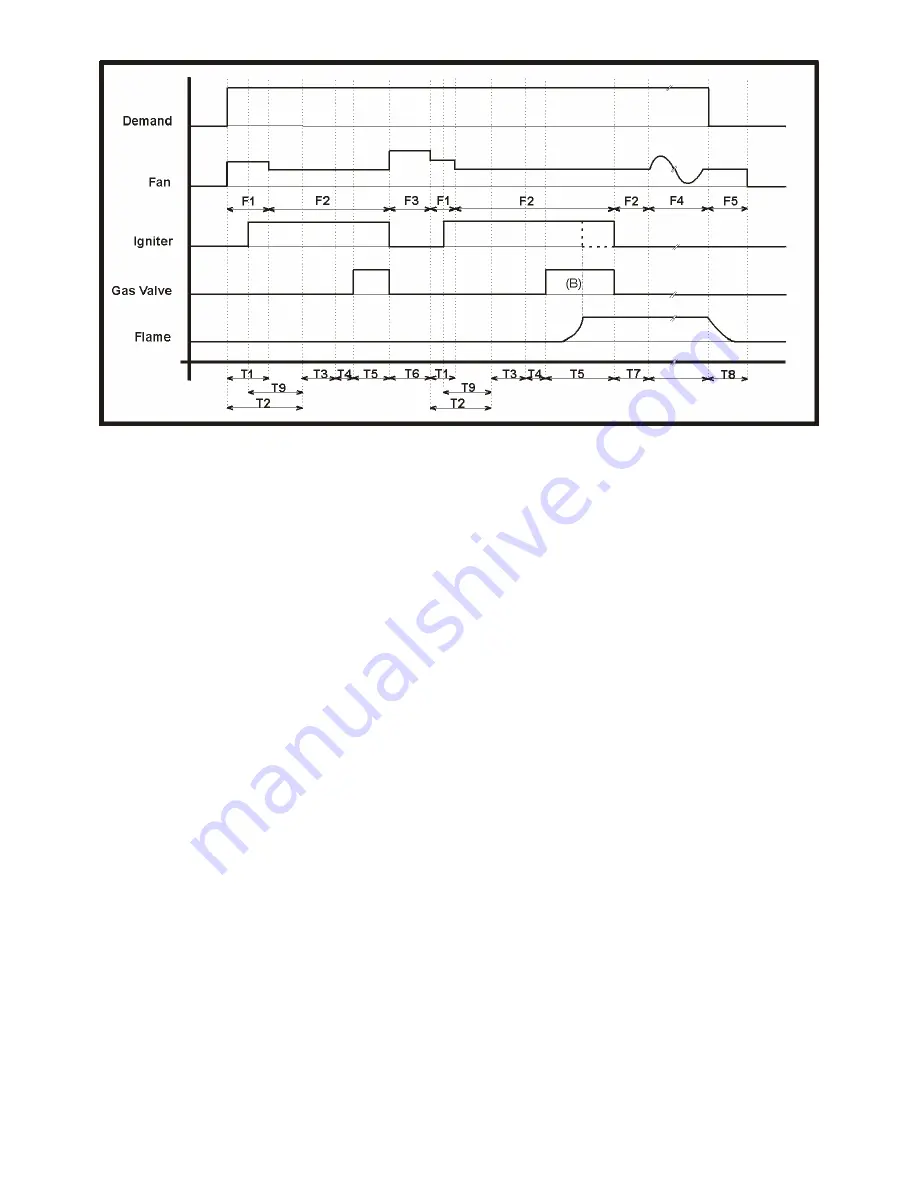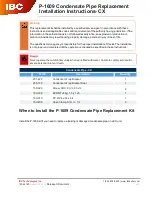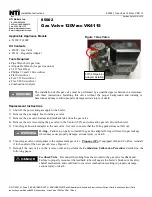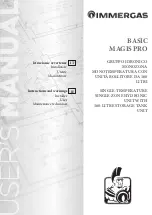
HAMWORTHY HEATING LTD
20
PUREWELL VariHeat he
500001155/F
Figure 8.1 - Burner Control Logic Diagram
Legend
F1: Fan High Speed
F2: Fan Ignition Speed
F3: Fan Max. Speed
F4: Fan Free Modulation
F5: Fan Post Purge
T1: Fan High Time
T2: Pre-Purge Time
T3: Pre-Ignition Time
T4: Relay Test Time < 0.8s
T5: Safety Time
B): Ionisation current switches
off HSi
T6: Post Purge Time
T7: Flame Stabilisation Time
T8: Flue Gas Purge Time
T9: Warm up Time HSi
With no heat demand, the pump (if connected) can either be running (pump overrun time) or ‘kicking’, once every
24hrs, to prevent pump seizure.
8.3 Pump
Kick
The kick time is programmable. If the control is set as a Master in a cascade multiple boiler arrangement, the kick
function will operate the ’primary pump’.
8.4 Lockout
The micro-processor is able to distinguish two types of ‘Lockout’, namely;
- LOP. “Lockout Processor”
This is when the control detects a serious internal fault (due to corrupt parameter from EEPROM, corrupted flash
memory, too many restarts after detecting a fault..etc) the control will lock-up and nothing will work including reset,
with the display registering the last message. The only way to reset is to switch off the mains power for at least 5
seconds. Should this procedure have to be repeated several times without resolving the problem, it is advisable to
replace the control.
- LOF. “Lockout Functional”
This is when the control detects a serious functional fault, the control will go to lockout and nothing will work
except the reset button. In certain lockouts, the fan will be driven to High speed for 1 minute such as during:-
Safety Limit Thermostat or Overheat Limit Thermostat activation
Loss or lack of flame during running or ignition
A Gas Valve fault
In other lockout modes, the fan will not be switched on. In cascade mode, the primary pump will run for the pump
overrun time.
If there is a power failure during a lockout, the control will return to lockout when the power is returned.
The alarm relay is only powered in the event of an alarm situation. During normal operation, the alarm relay is not
powered.
















































